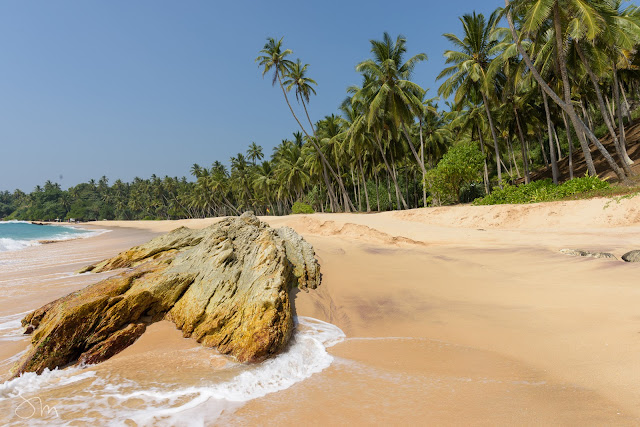The historic town of Galle has been a large seaport of the island since ancient times when ivory and spices, especially cinnamon, were exported as part of the "Silk Road" connecting China and South-East Asia to Persia and Europe.
Galle Lighthouse
entrance to the fort with the British coat of arms above
The other side carries the Dutch East India Company's coat of arms with the VOC-Abbreviation - Verenigde Oost-Indische Compagnie:
on the ramparts of Galle fort
pedestrians area inside the fort
an old British anchor
Half an hour outside of Galle on a hill at Rumassala sits this Pagoda with depictions of Buddha, a modern "Peace Pagoda" built in 2005 by Japanese Buddhists.
A more ancient site is the "rock temple" Yatagala, where monks have been meditating under the natural rocks for centuries.
under the "Bo" or Bodhi Tree
the natural rock is painted and makes up the ceiling
The Cannonball-Tree (Couroupita guianensis) - what an ill-fitting name!- and its beautiful and very fragant flowers
A tour across the countryside ...
Waterbuffalo closely inspecting a curious cattle egret
the endemic Toque Macaque or Ceylon-Hutaffe (Macaca sinica)
Local crops are not only cinnamon and tea but also rubber. Here you see it being collected in a small coconut shell, about 25 ml per day from a healthy rubber tree.
East of Hambantota the marshy land is used for harvesting sea salt.
Fishermen on the south coast use incredibly slender small boats with stabilizing side constructions.
Galle fish market
At Koggala Beach the famous "stilt" fishers nowadays ply their trade for tourists only. Tiny fish can be found on the surf on the beach making this method a little cumbersome ...
... except for the kingfisher on the next pole. For him tiny fish are just right ...








































No comments:
Post a Comment